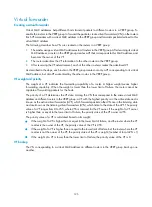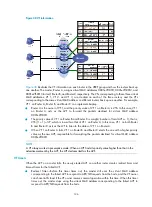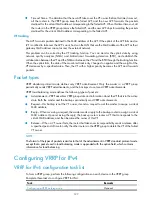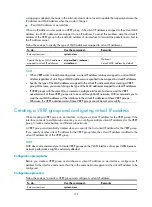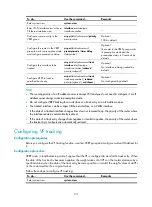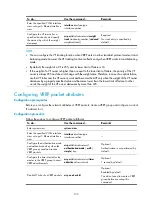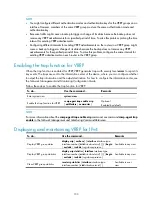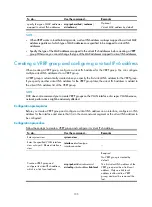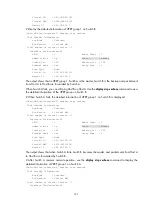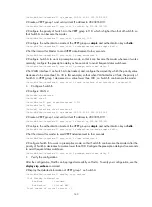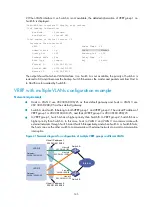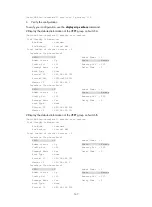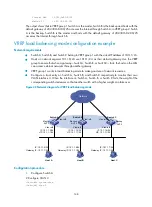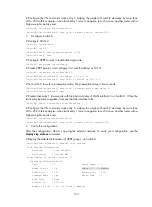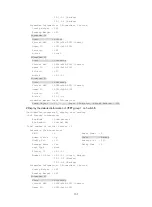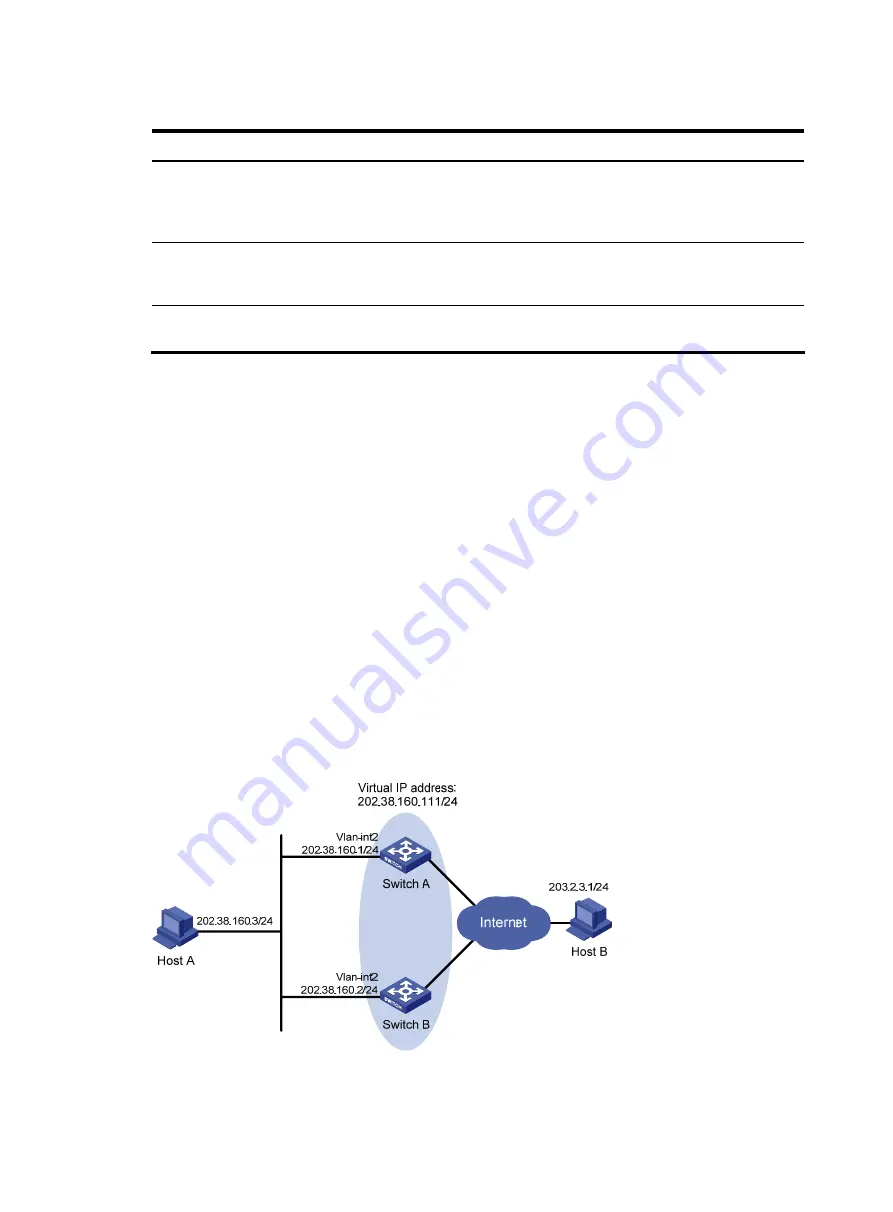
139
Displaying and maintaining VRRP for IPv6
To do…
Use the command…
Remarks
Display VRRP group status
display
vrrp ipv6
[
verbose
]
[
interface
interface-type interface-number
[
vrid
virtual-router-id
] ] [
|
{
begin
|
exclude
|
include
}
regular-expression
]
Available in any view
Display VRRP group statistics
display vrrp
ipv6 statistics
[
interface
interface-type
interface-number
[
vrid
virtual-router-id
] ] [
|
{
begin
|
exclude
|
include
}
regular-expression
]
Available in any view
Clear VRRP group statistics
reset vrrp ipv6 statistics
[
interface
interface-type
interface-number
[
vrid
virtual-router-id
]
]
Available in user view
IPv4-based VRRP configuration examples
This section provides these configuration examples:
•
Single VRRP group configuration example
•
VRRP interface tracking configuration example
•
VRRP with multiple VLANs configuration example
•
VRRP load balancing mode configuration example
Single VRRP group configuration example
Network requirements
•
Host A wants to access Host B on the Internet, using 202.38.160.111/24 as its default gateway.
•
Switch A and Switch B belong to VRRP group 1 with the virtual IP address of 202.38.160.111/24.
•
When Switch A operates normally, packets sent from Host A to Host B are forwarded by Switch A;
when Switch A fails, packets sent from Host A to Host B are forwarded by Switch B.
Figure 39
Network diagram for single VRRP group configuration

